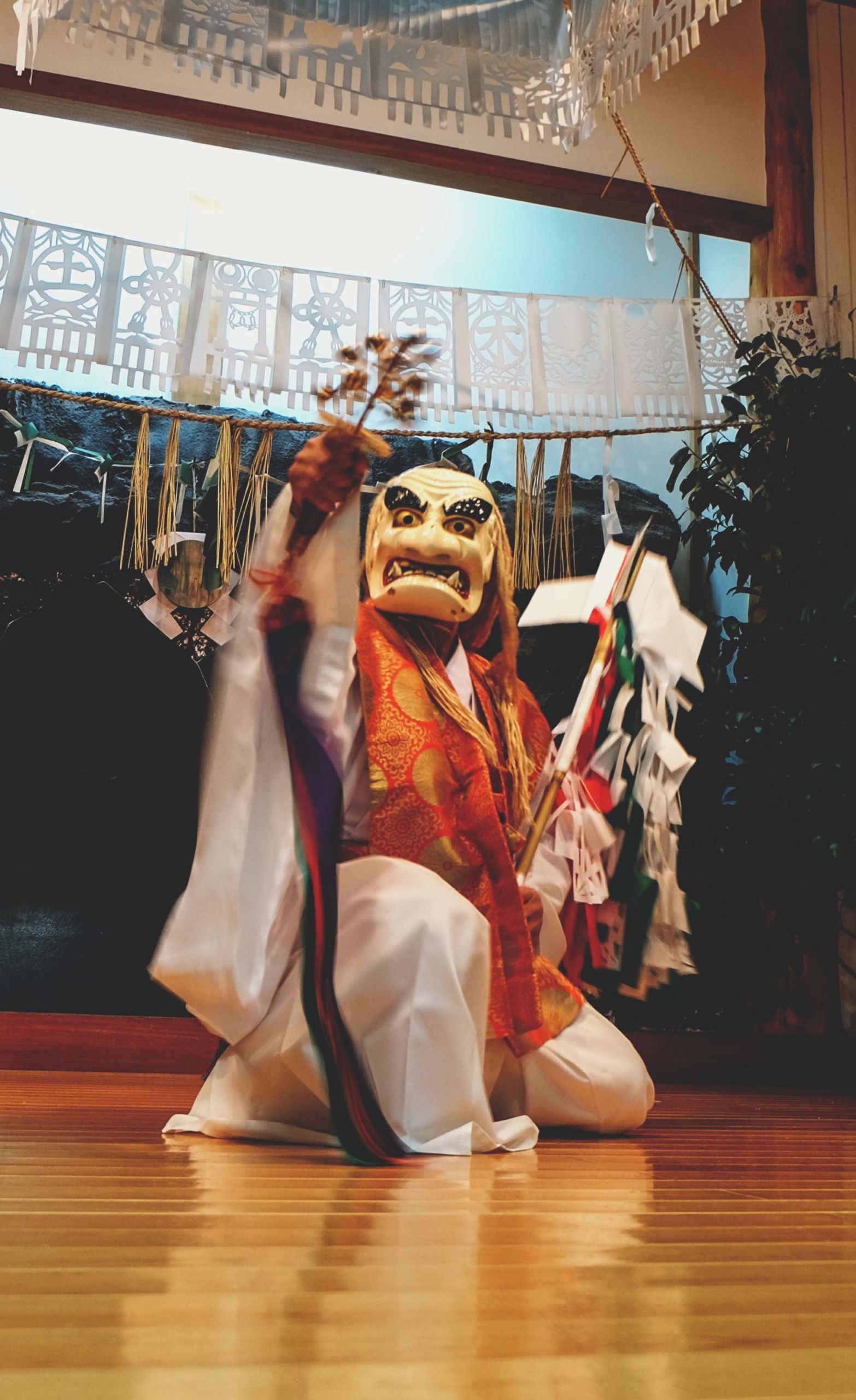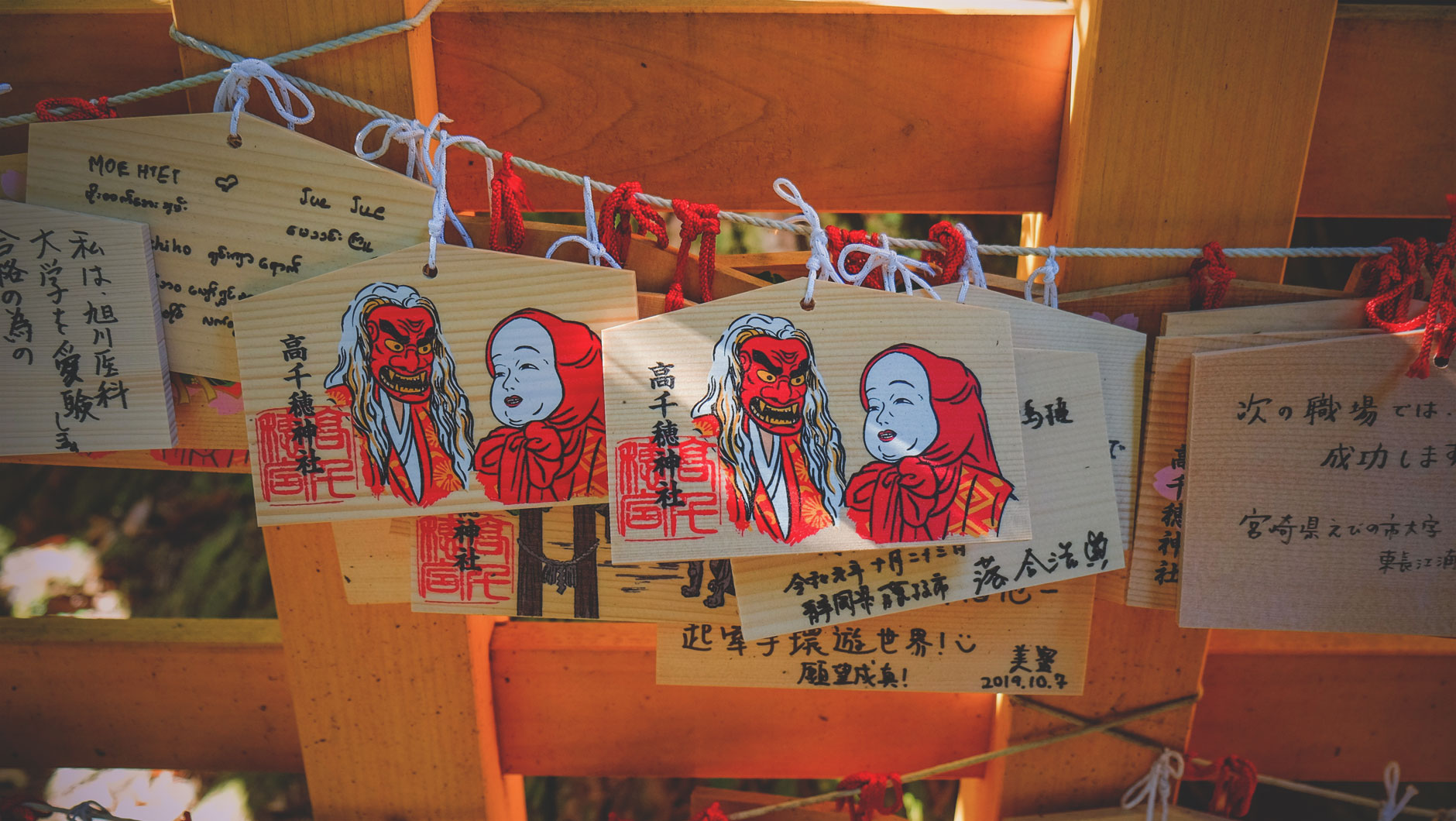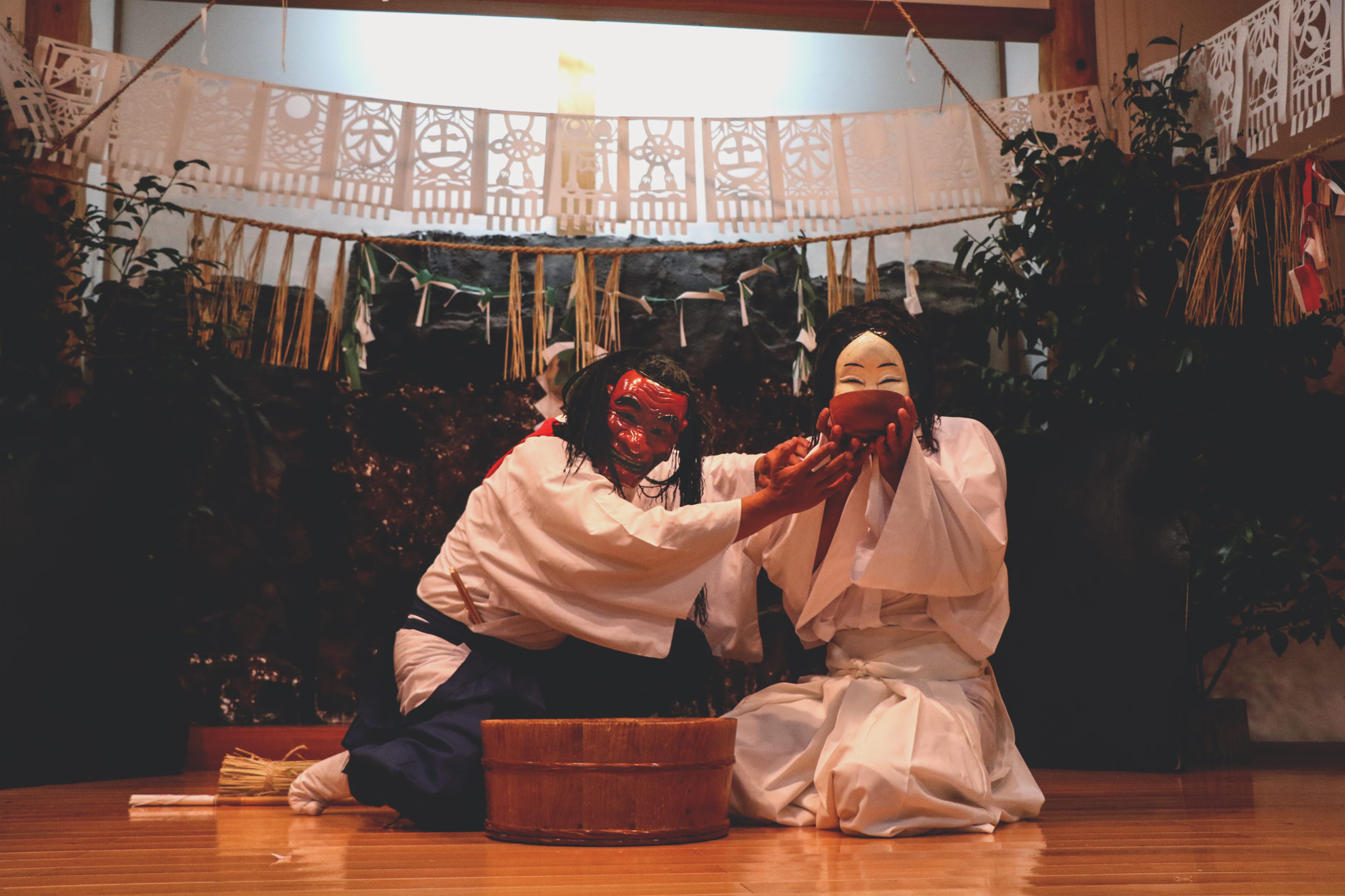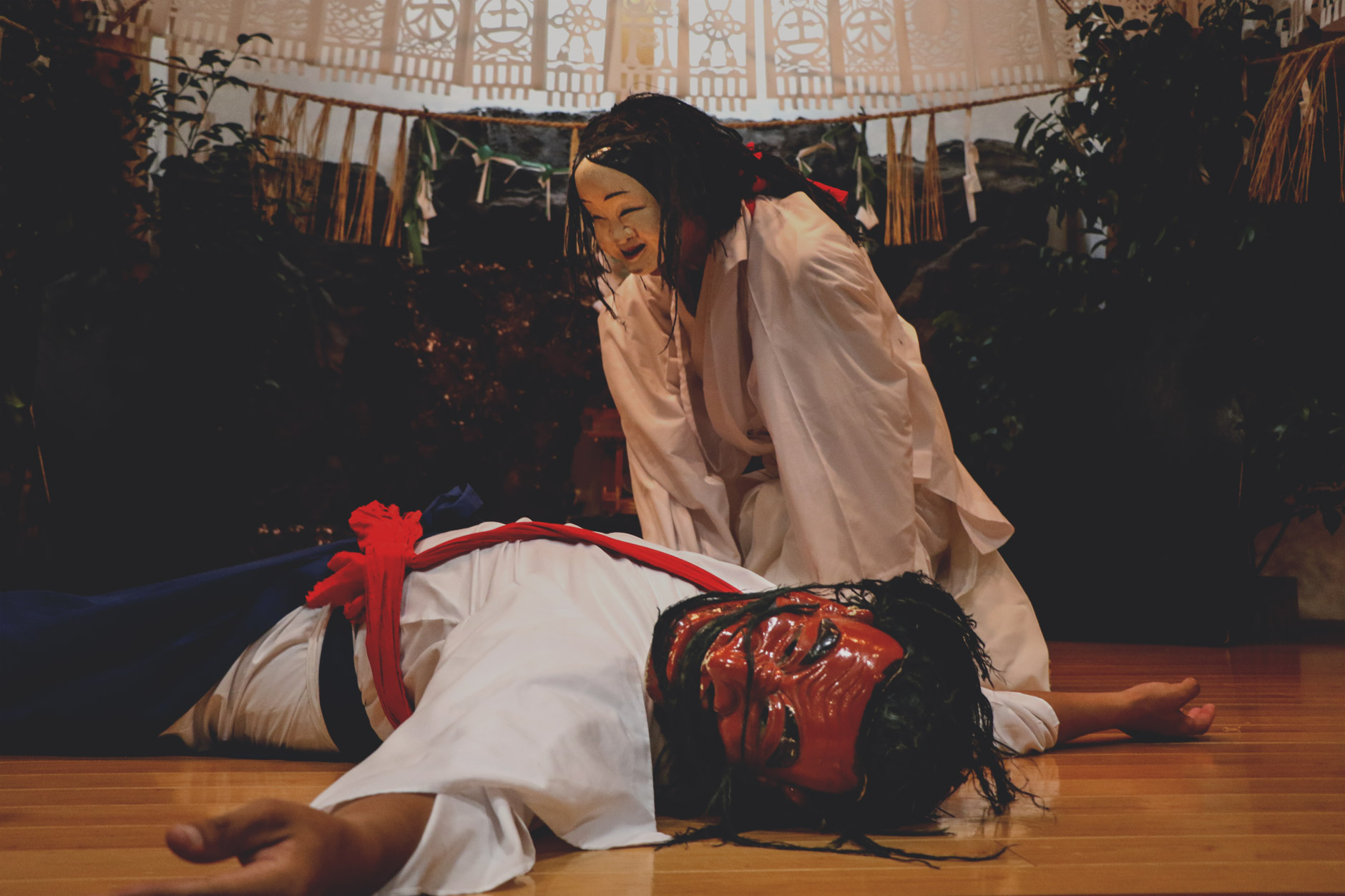See a Traditional Kagura Show at Takachiho
tale as old as time, Kagura is a style of ancient dance performance reenacting classical Japanese myths of fearsome demons, mischievous yet ferocious gods, and tales of good versus evil.
Kagura is Japan’s earliest form of folk performing arts and has been practiced at Shinto shrines for over a millennium, entertaining the Imperial courts or at festivals. Though performing troupes specializing in Kagura have been decreasing due to modern times, it is still considered a living tradition with a deep spiritual connection to Shinto rituals set to the cycles of the agricultural calendar.
If you are keen to witness this dance of the gods throughout Japan many regional variations exist. Talyssa and I found ourselves in the rich scenic Miyazaki prefecture where the Kagura style at Takachiho is performed slower with the most popular location set within the grounds of Takachiho shrine – one of the spiritual power spots of the area.
Being a small country town, there are limited sources of English explanations about Takachiho’s Kagura but don’t let the language barrier deter you from experiencing one in person! Enjoying Kagura can appeal to all types of people since not a single word is spoken. Though, of course, having some background knowledge into the legends that surround each dance would make the performance that much more enjoyable.
Luckily through our experience, we’ll share with you all there is to know about the viewing of Kagura shows at Takachiho Shrine and maybe you’ll even have the chance to be part of the show!
Origins of Kagura
Not to be confused with Japan’s other dance performance traditions, Noh and Kabuki, Kagura originated as a religious dance with deep ties to Shintoism, which is why you usually see them performed at Shinto shrines throughout Japan.
The tales performed during Kagura come from one of Japan’s oldest historical books called the Kojiki – a collection of records detailing the beginnings of Japan’s mythical creation involving the birth and creation of the kami gods, events of local legends and myths, and the founding of the Japanese Imperial line. The Kojiki was written more than 1,300 years ago and in the first volume, it details the famous tale called Amano-Iwato.
The story involves the sun goddess Amaterasu and her older brother Susanoo, the god of storms and seas. The legends tell of Susanoo’s polarising characteristics as being both heroic yet also wildly reckless so when visiting his sister after being banished from Heaven by his creator, Izanagi, Amaterasu became suspicious of her brother but accepted his challenge to prove his sincerity with a trial by pledge. After Susanoo went on a rampage in her court being “raged with victory”, Amaterasu in grief and anger hid inside a cave. In her absence, Japan was plunged into endless darkness, and to restore the light the gods danced and played music to coax her out so the sun would shine again. This is considered the very first Kagura ever performed.
Kagura in Takachiho
eing completely new to the world of classical Japanese theatre we weren’t sure what we were getting into. Little did we realize, seeing the art of Kagura performed here shares a special connection to Japanese mythology.
Takachiho is home to the Amano-Iwato cave, the cave where the goddess Amaterasu hid according to the legend. As a matter of fact, the cave and the Takamagahara pantheon – a site that is said to be the gathering spot for the other gods to discuss how to coax Amaterasu out of the holy cave – are both located in the Takachiho area near Amano Iwato Shrine.
The tale of Amano-Iwato, being one of the most important and well-known legends in Japan, is proudly celebrated as part of the town’s heritage. Takachiho has special Kagura night dances (yokagura) dedicated to retelling the legendary quarrel between the divine siblings as well as other deeds by the gods in a series of 33 parts.
These performances are held at various locations but predominantly at Amano Iwato Shrine and Takachiho Shrine on Saturday evenings from mid-November to mid-February. The main performance held on November 22nd to 23rd is called the Takachiho Yokagura Festival. It celebrates an 800-year-old tradition with a night full of dancing, storytelling, drumming, mask-wearing, and drinking shochu liquor made from potato, wheat, or rice. Best of all, it’s a free all-night event though you are expected to make an offering of money or shochu. For a culturally rich evening steeped in tradition and the hospitality of the local community, this sounds like a welcomed tradeoff.
For those traveling outside these months, you can still enjoy a shortened version of the epic tale at Takachiho Shrine throughout the year for just 700 yen.
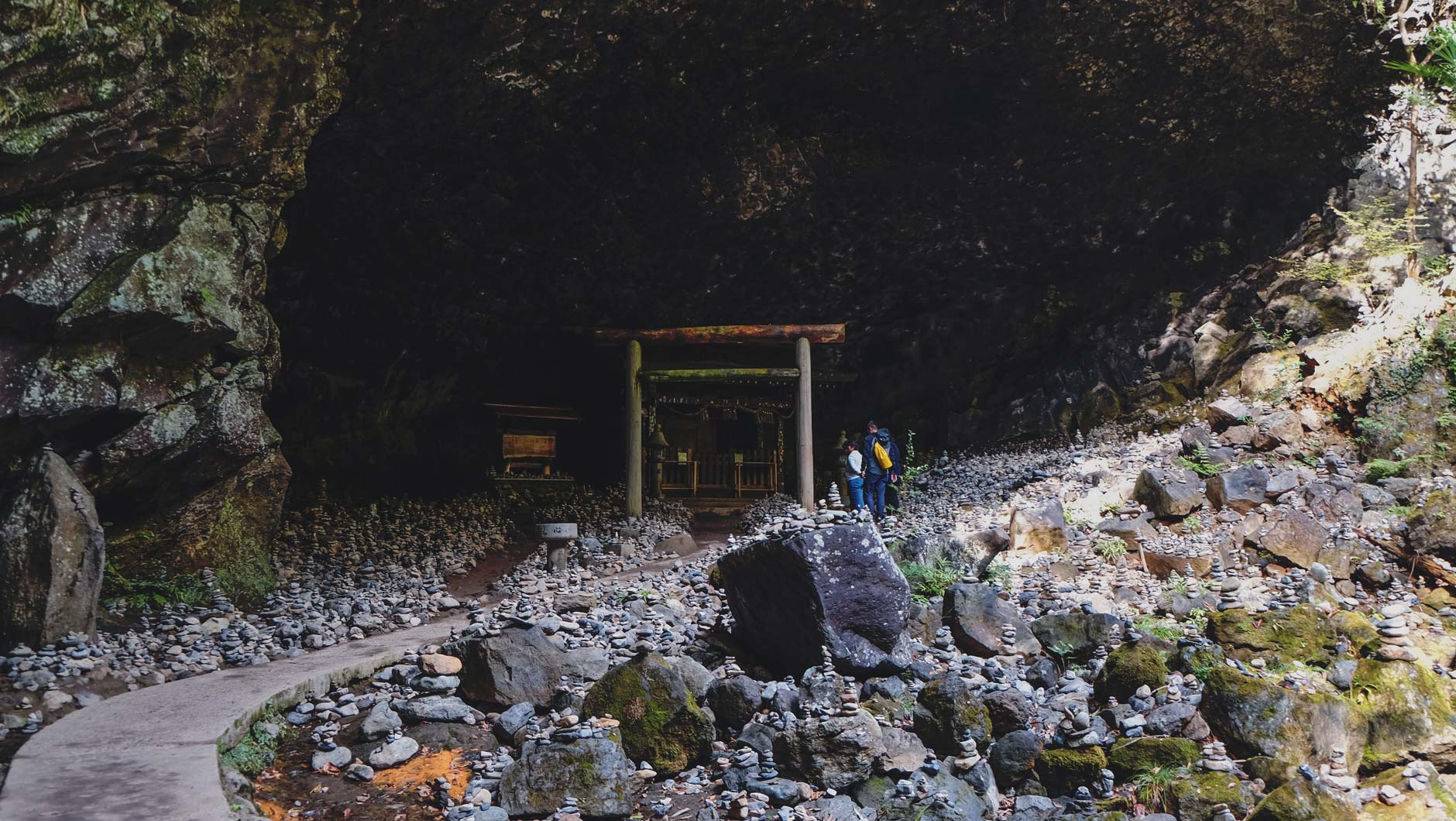
The Takamagahara Pantheon – a key site in the Amano-Iwato legend.
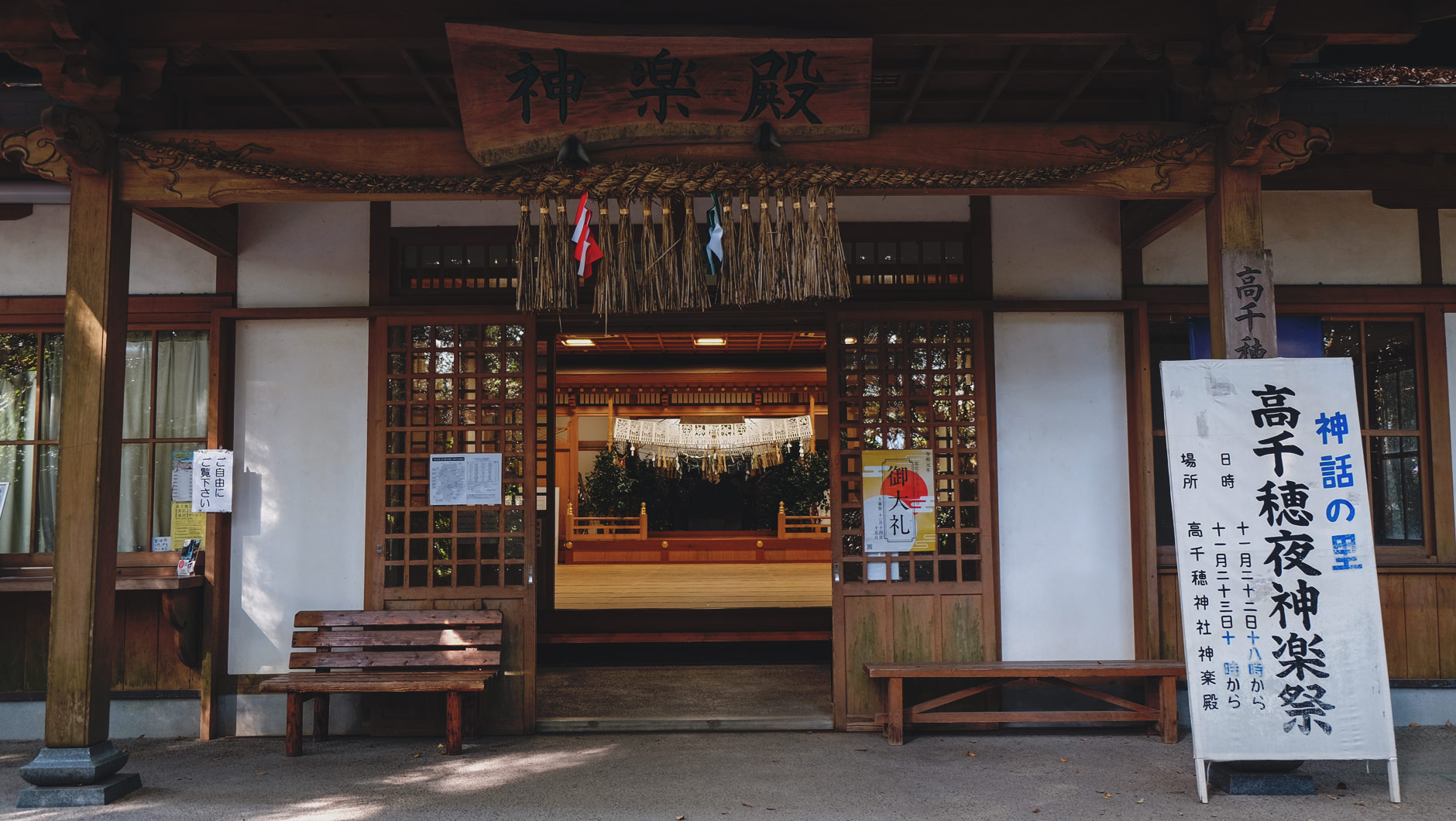
The Kagura Hall at Takachiho Shrine.
View this post on Instagram
View this post on Instagram
During the Yokagura Festival, try a Takachiho specialty called “Kappo Zake” – sake or shochu served hot in a fresh, green bamboo tube.
The Kagura Show at Takachiho Shrine’s Kagura Hall
hough we missed the opportunity to see a full performance of a night Kagura dance, we were able to enjoy the shortened show at Takachiho Shrine instead.
Purchasing a ticket was very simple and straightforward and the reception counter opens an hour before the show starts at 8PM. Arriving early with a ticket and English pamphlet in hand we entered the Kagura Hall eager to get a good view.
There are a few things you need to keep in mind before entering the performance room. The most important is to take your shoes off before entering the room. Though you can simply leave your shoes at the entrance neatly, the Shrine also has plastic bags available to place your shoes inside if you want to keep them with you.
When you enter the room, you can choose anywhere to sit on the floor in front of the stage. Though the shrine does not provide chairs or cushions, you are allowed to bring your own to make it more comfortable. The show runs for an hour roughly so sitting on a blanket or something to cushion your butt while you watch is sweet relief from the hard flooring.
When the show is about to begin, the shrine’s head priest appears and will act as the MC for the night. He speaks only in Japanese throughout the show but in general, he addresses the audience to introduce the show, talk a little about the town’s heritage and provides some context to the stories performed.
As the sweet and haunting sound of a Japanese bamboo flute starts to play, the performer enters the stage with the beating of the drum ready to tell the story of legends.
The Dance of Tajikarao
The Dance of Tajikarao depicts the god of physical strength, Tajikarao, using various methods to search for Amaterasu before discovering the Heavenly Rock Cave she was hiding behind. In this dance, his mask is depicted as a white face with yellow hair and the performer is holding a Kagura Suzu in his hand. The Kagura Suzu is a bell instrument used during Kagura and Shinto practice with the purpose of calling the gods’ attention.
The Dance of Uzume
The goddess of performing arts, Ame no Uzume, performs a dance in front of the cave Amataersu was hiding in. According to the legend, in her trance-like state, her dancing became increasingly lewd (like a striptease) causing the gathered gods to howl in laughter. This piqued Amaterasu’s curiosity and caused her to emerge to see the commotion outside.
The Dance of Totori (Removing the Door)
During this dance, the god Tajikarao uses his great strength to remove the hefty door of the cave and in the dance’s climax, rips it off and lifts it over his head in triumph. To show his great strength, this dance depicts his mask as a red face with jet black hair. This particular pose is strikingly memorable and many depictions of Tajikarao show him in this iconic stance. It is said that he threw the cave door with so much might, it landed on the top of Mount Togakushi in old Shinano Province (now known as Nagano Prefecture).
The Dance of Goshintai (Embodiment of the Kami)
The final dance is of the divine couple, Izanagi and Izanami, who are the creators of Japan and many gods (including Amatarasu and Susanoo) according to legend.
The performance shows them in marital bliss pulling off harmless pranks on each other in front much to our amusement. During the dance, they are shown brewing and drinking sake when they both become so drunk, they venture off the stage and become flirtatious with lucky audience members. With a good laugh and happy smiles on our faces, it was a perfect way to end the show and to highlight the significance of sake as a traditional custom. In old texts, sake was called “God wine” and the happiness of drinking it traditionally was thought of as a way of bringing the gods and the people together. This dance also serves as a prayer for a happy marriage, birthhood, and a prosperous harvest.
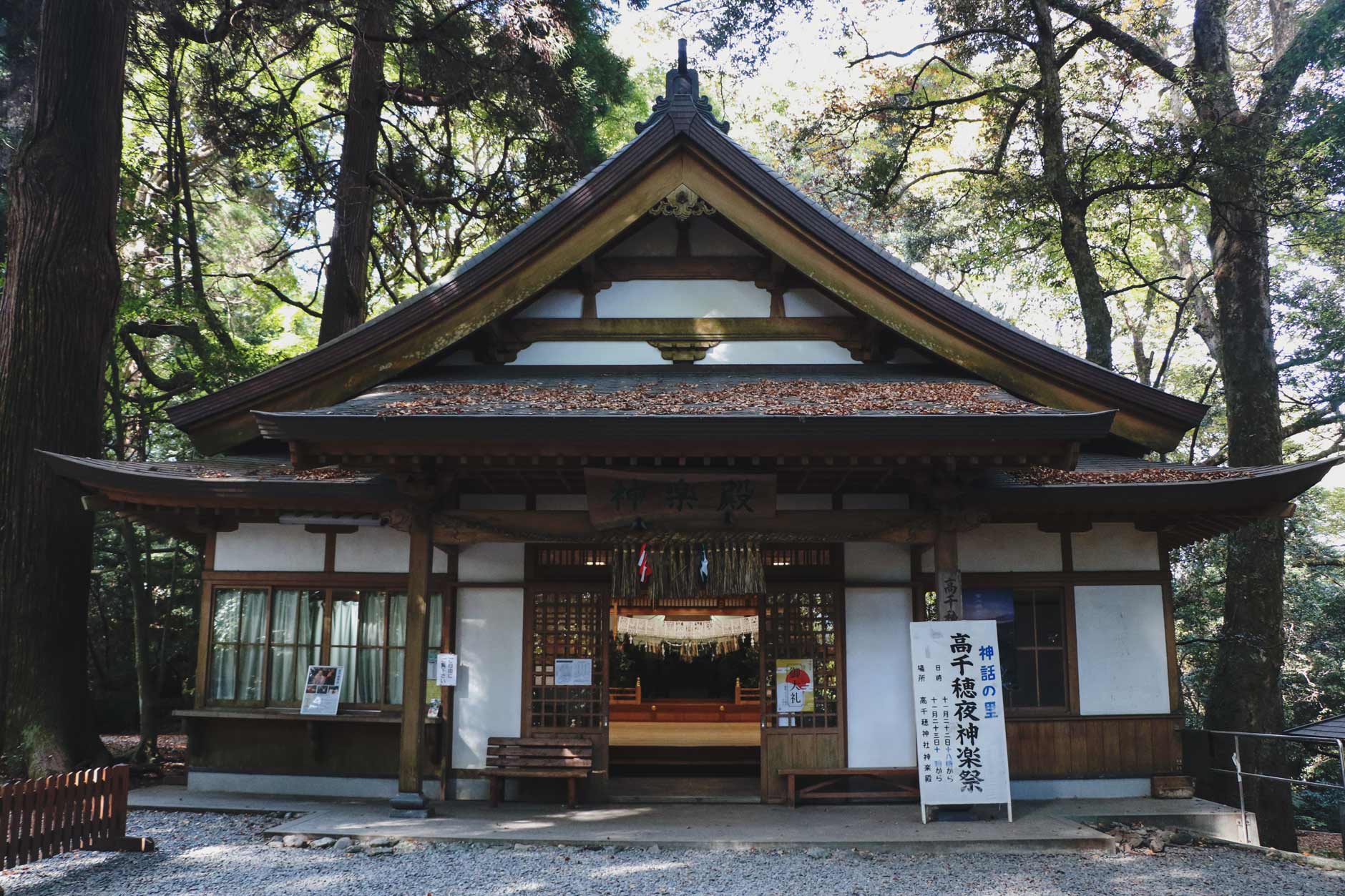
Takachiho Shrine’s Kagura Hall
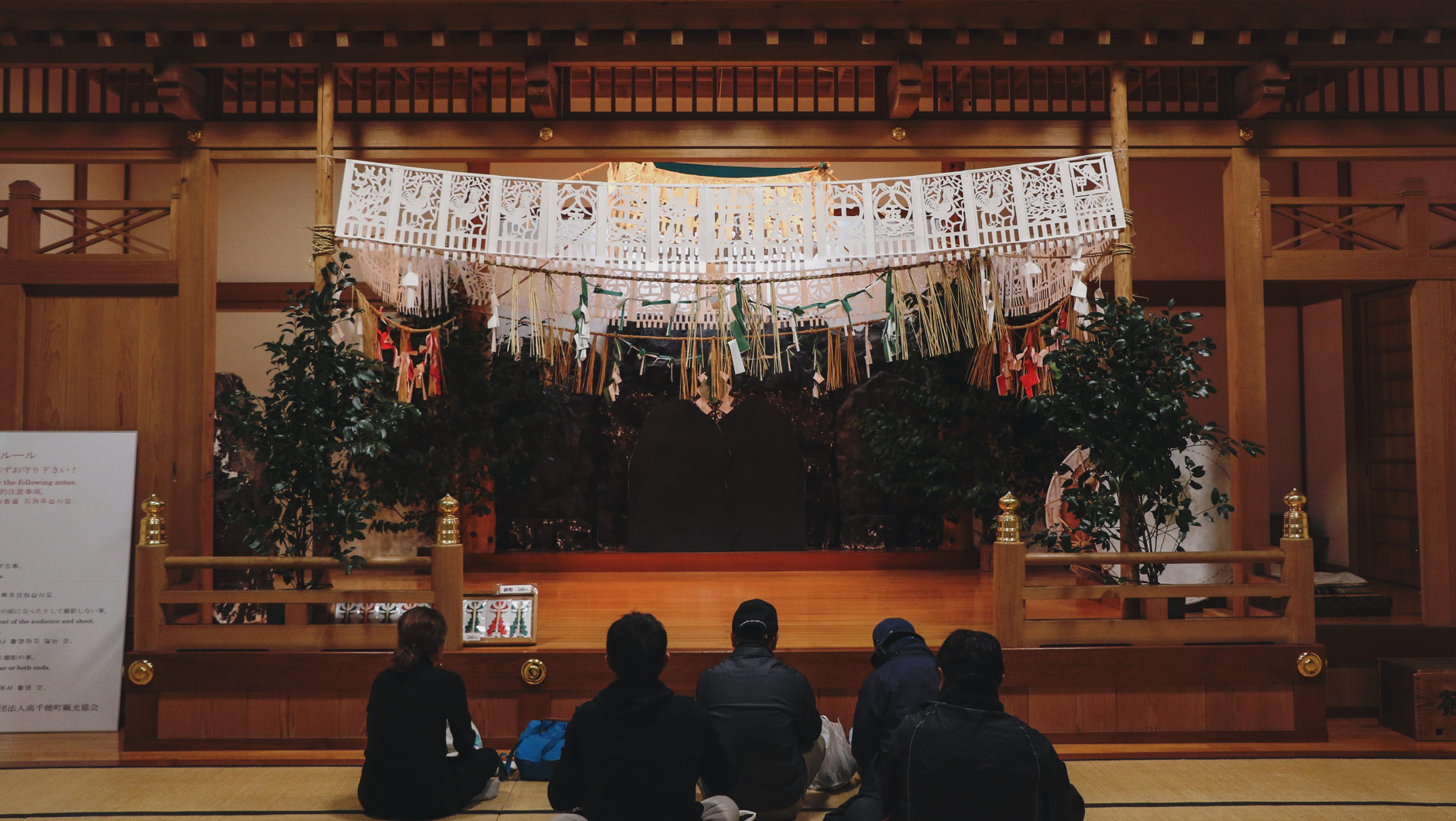
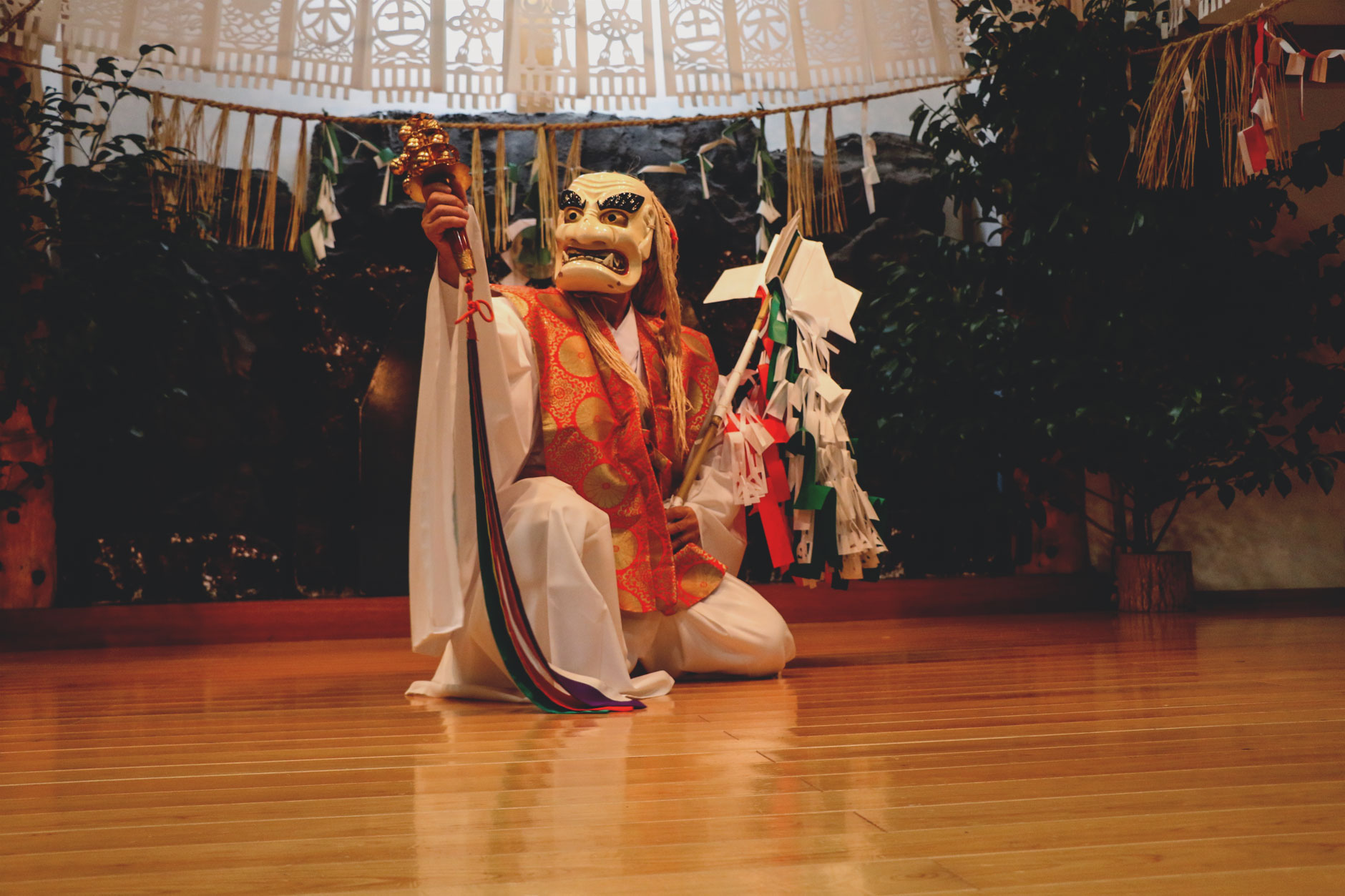
The Dance of Tajikarao
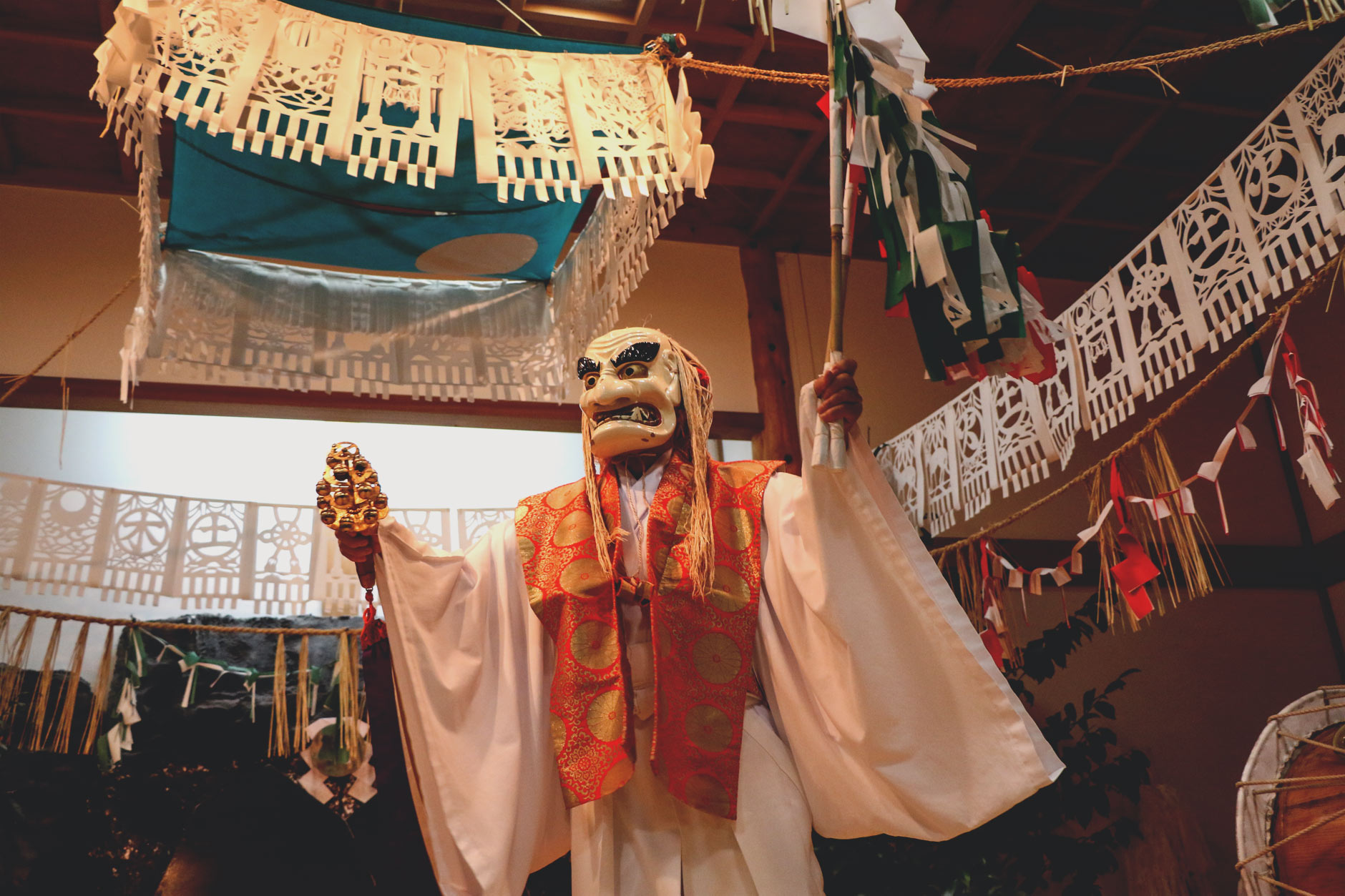
The god Tajikarao holding a Kagura Suzu bell.
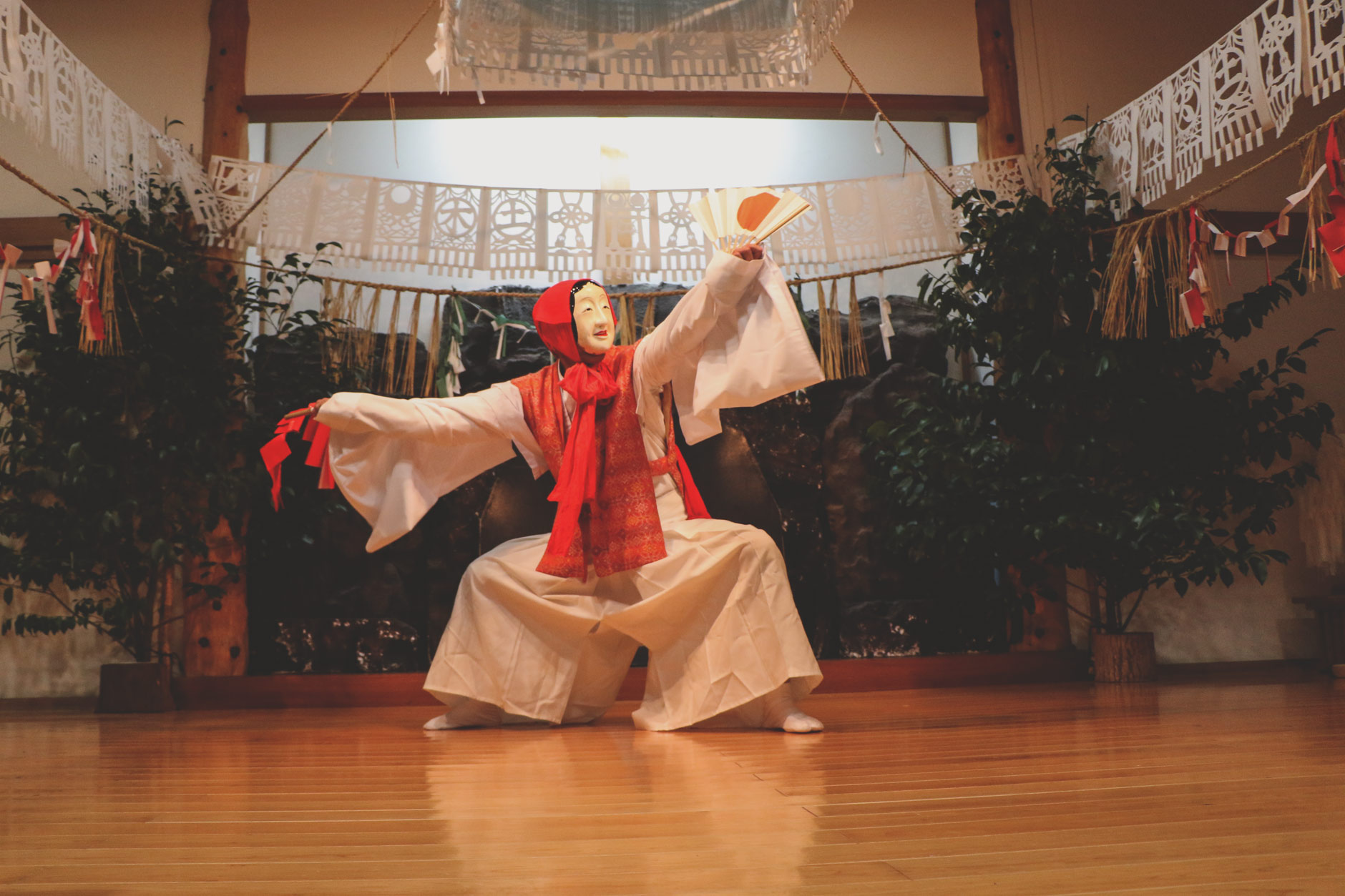
The Dance of Uzume
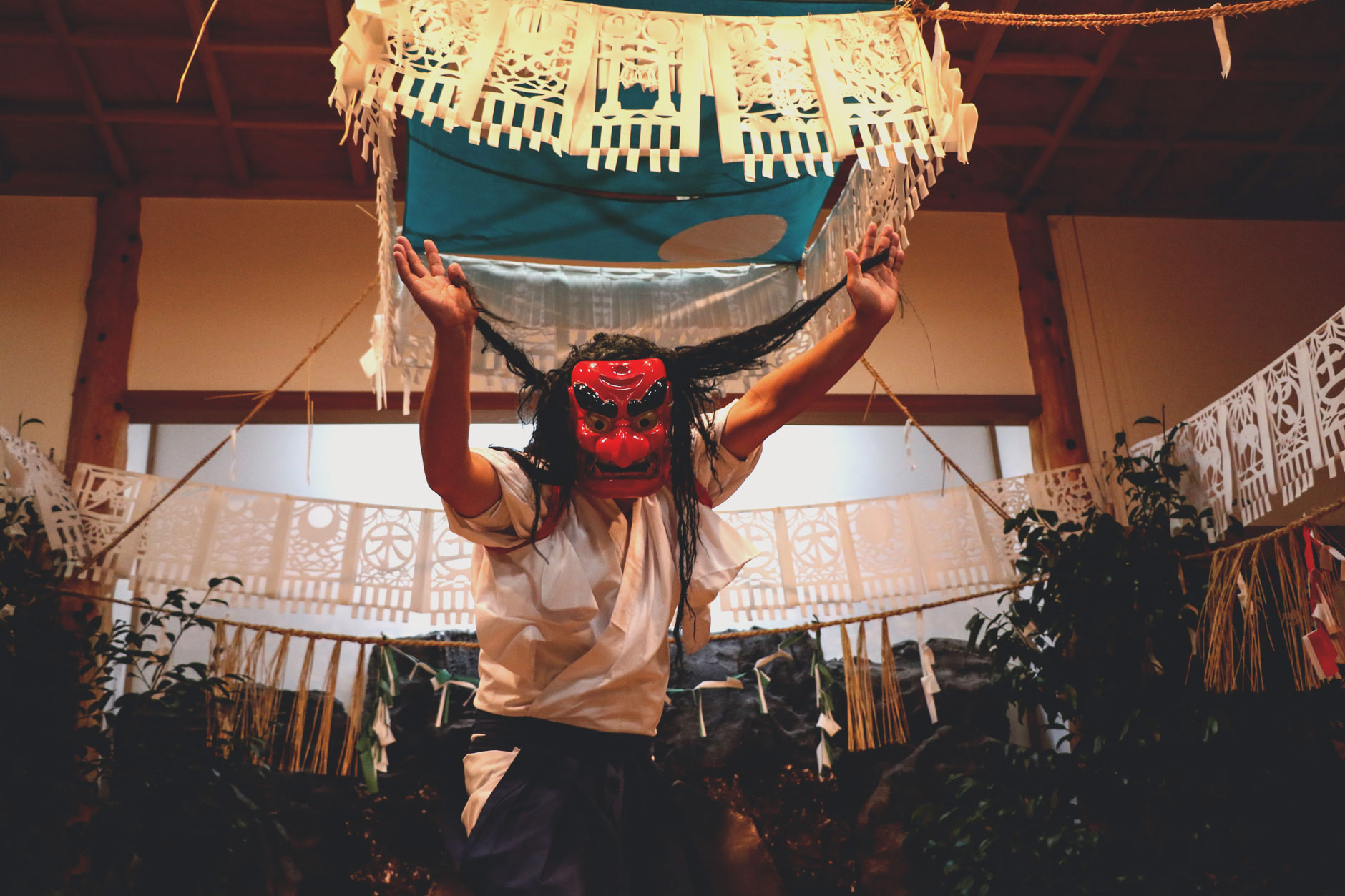
The Dance of Totori (Removing the Door)
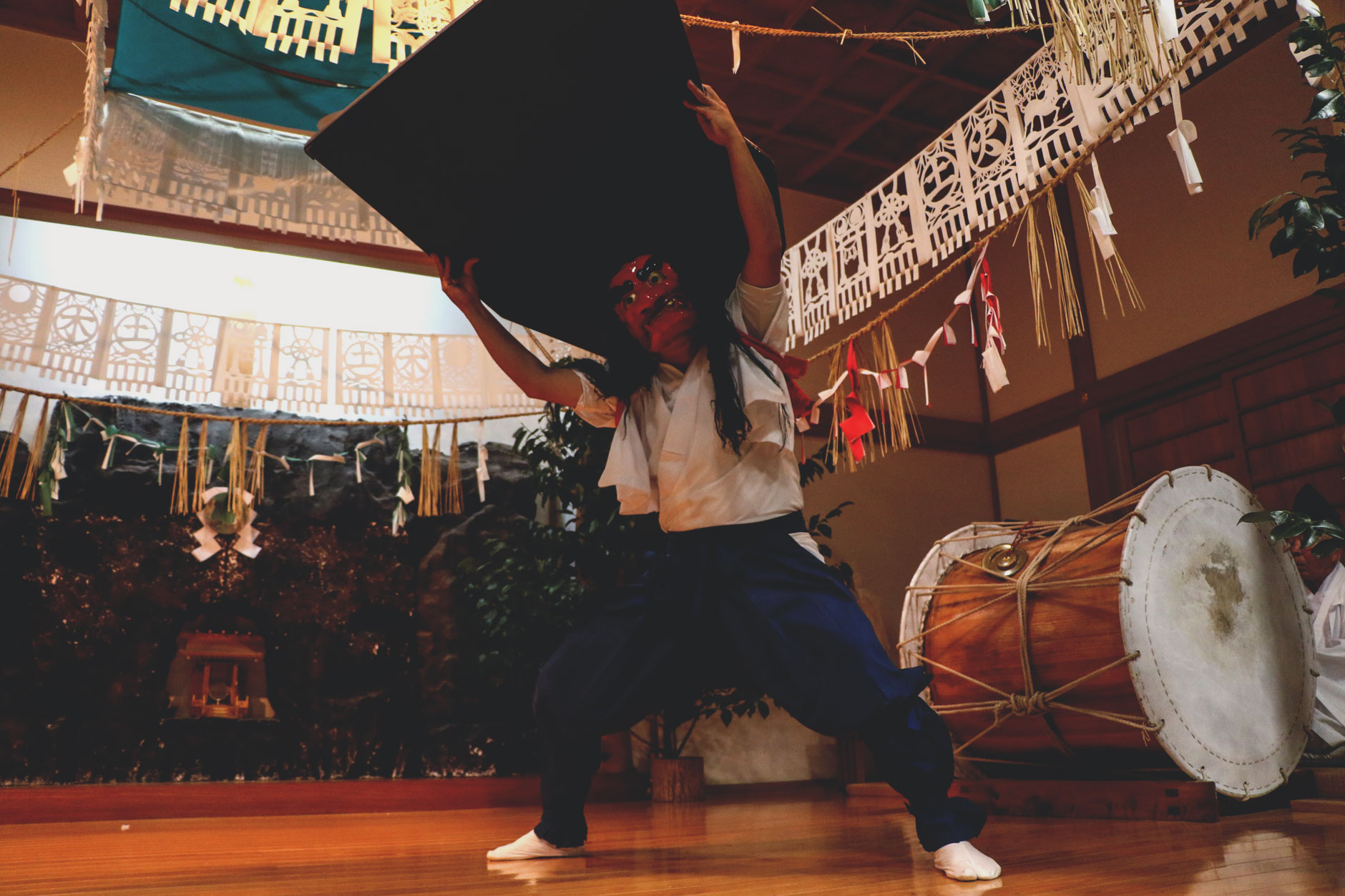
The god Tajikarao showing his strength and lifting the cave door.
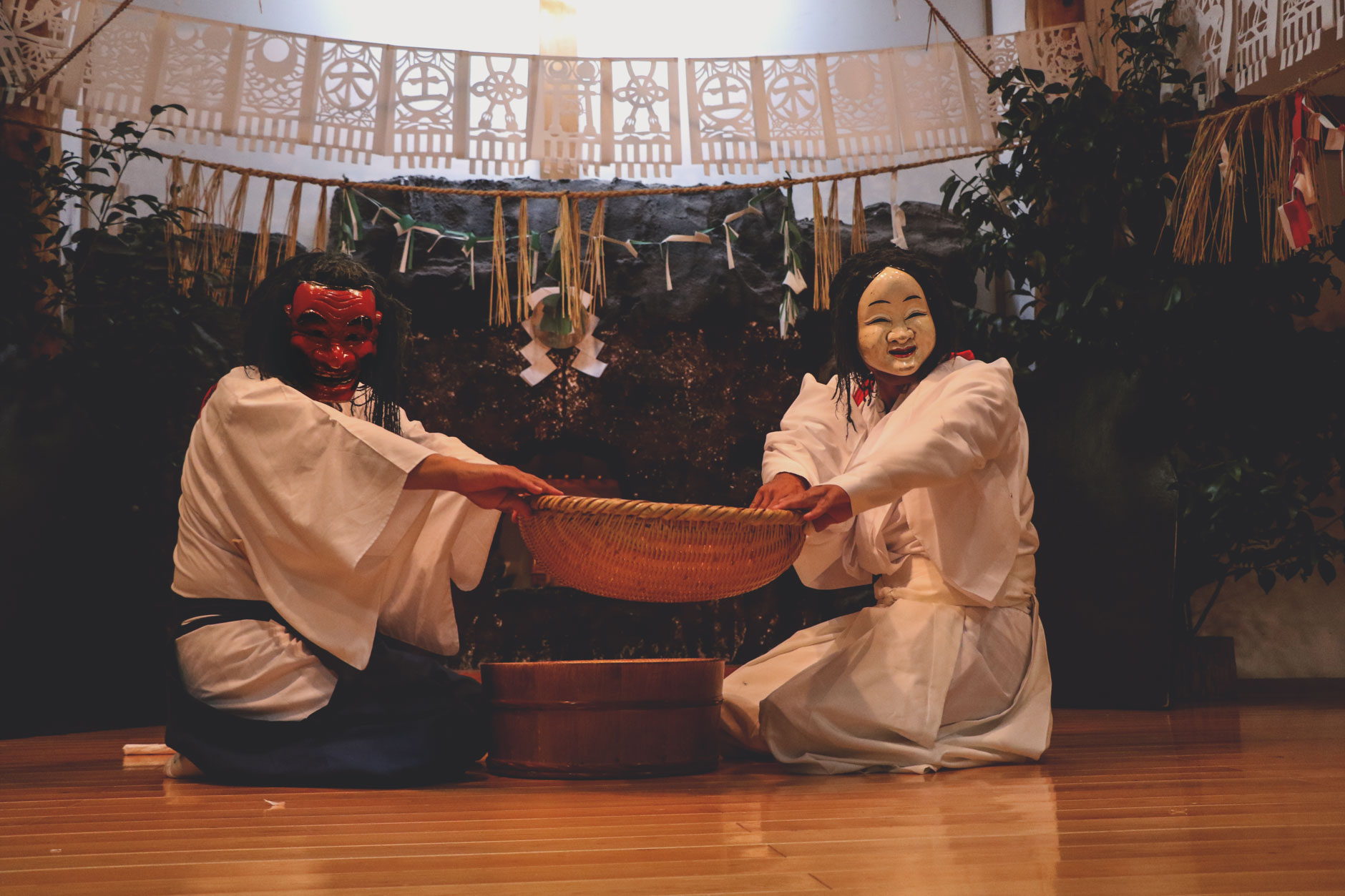
The Dance of Goshintai (Embodiment of the Kami)
How to get to Takachiho
From Kumamoto
From Kumamoto Airport, there are direct highway buses to the Takachiho Bus Center operated by Kyushu Sanko Bus and Miyazaki Kotsu. Be mindful as there are only two buses scheduled per day. The whole trip will take around 2 hr 30 min and costs 2410 yen one way.
From Miyazaki
From Miyazaki Airport, you can take the JR Nichirin or Hyuga limited express train to Nobeoka Station and transfer to a number 71/72 Miyazaki Kanko bus to the Takachiho Bus Center. The whole trip will take roughly 3 hr 30 min. The express train will take 80 minutes and costs 3000 yen while the bus trip will take 90 minutes and costs 1820 yen.
By car
As Takachiho is situated within the mountains surrounding the Mount Aso area, public transportation is both rather infrequent and inconvenient. Your best bet is to hire a rental car to get the most out of your trip. Not to mention the mountain drive is both scenic and beautiful especially during the autumn time! The easiest way to rent a car is at the airport.
If you are looking for a place, we hired our rental car through Nippon Rent-A-Car at Kumamoto Airport which was very easy and had great staff service.



